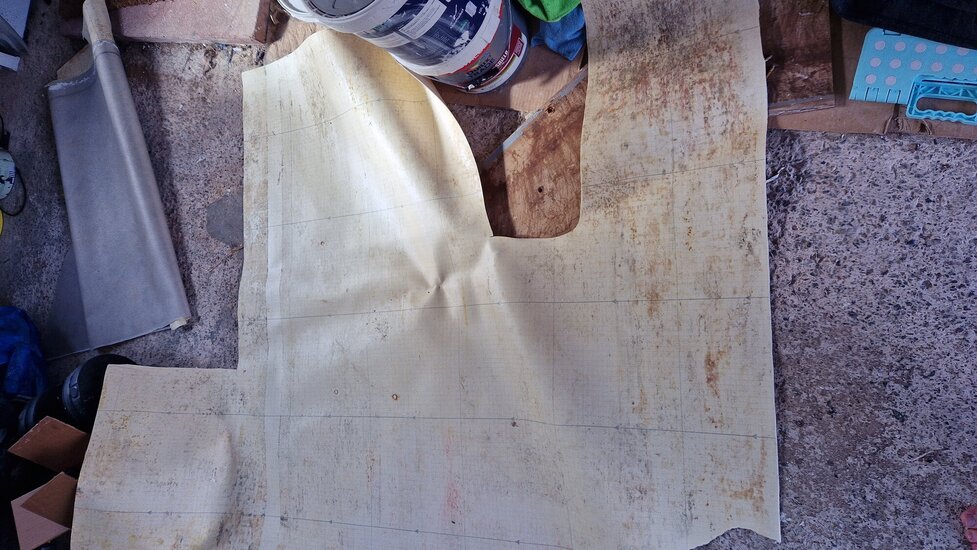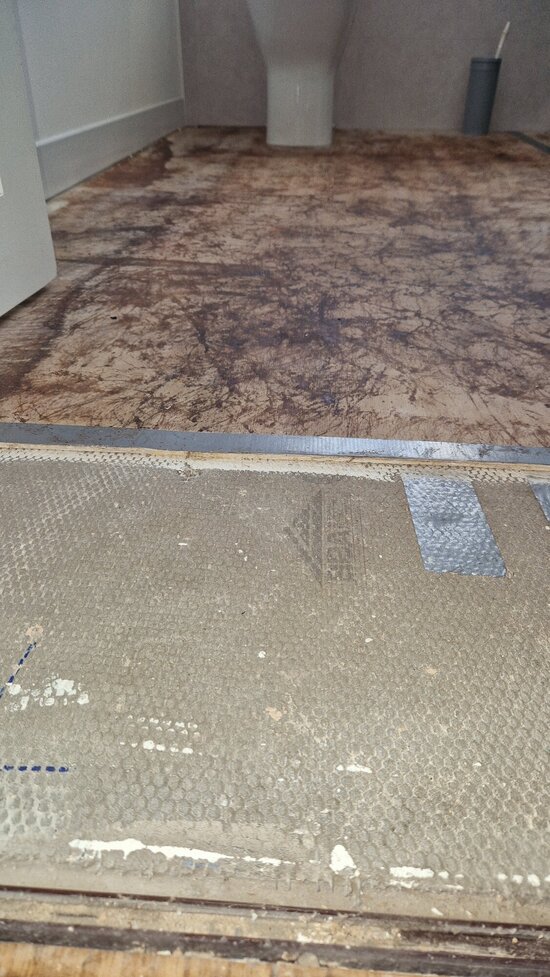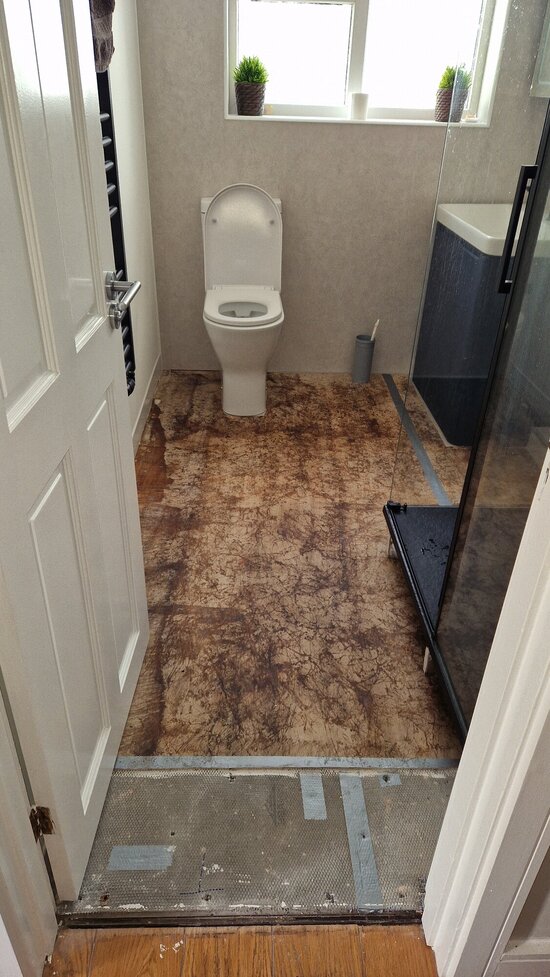Renovated the bathroom on my 1970
bungalow last year. Took up the old pink floor tiles with sds. Chunks of what i assume is self leveller or maybe screed (?) came up with them.
Left with Concrete slab. laid insulated coated (cement topped) tile backer boards (marmox) using a thick amount of flexible tile adhesive to make floor completely level. Laid 6mm marine ply over top of boards and then vinyl (for warmth).
Fast fwd 12 months, pinky stains through vinyl. Took it up, mould on underside of vinyl.
Took 6mm marine ply up, seems a bit brittle like it has moisture but nothing too bad. Bought floor hygrometer placed on backer boards and after 24 hours it's showing 75% (and it's been dry here for weeks).
So quite high.
I'm guessing I need a dpm and I know it should go under the tile backer boards but I don't want/can't take them all up (glass shower and tray is in) so I dont want to take that out again nor be using sds in there taking up all the tile adhesive underneath with chips flying everywhere. Ps. I cant add much more height.
I've bought tiles (porcelain, impervious to moisture) which should be more moisture forgiving than vinyl. Can I use a liquid dpm on top of the cement topped tile backer boards? Or even a normal dpm? Or am I better with some sort of ditra mat type thing and then tile on top of that? Ideally I'd like electric ufh with the tiles but realise that may make the relative humidity worse.
I know everyone will say take the tile backer boards up , lay dpm and put new tile backer then electric ufh then tile. But just checking if I can do anything else on top of existing backer boards....... 🙏 picture to show type of backer board as i was taking marine ply up. The stains on the top side of ply are just the old vinyl glue not water as such.
bungalow last year. Took up the old pink floor tiles with sds. Chunks of what i assume is self leveller or maybe screed (?) came up with them.
Left with Concrete slab. laid insulated coated (cement topped) tile backer boards (marmox) using a thick amount of flexible tile adhesive to make floor completely level. Laid 6mm marine ply over top of boards and then vinyl (for warmth).
Fast fwd 12 months, pinky stains through vinyl. Took it up, mould on underside of vinyl.
Took 6mm marine ply up, seems a bit brittle like it has moisture but nothing too bad. Bought floor hygrometer placed on backer boards and after 24 hours it's showing 75% (and it's been dry here for weeks).
So quite high.
I'm guessing I need a dpm and I know it should go under the tile backer boards but I don't want/can't take them all up (glass shower and tray is in) so I dont want to take that out again nor be using sds in there taking up all the tile adhesive underneath with chips flying everywhere. Ps. I cant add much more height.
I've bought tiles (porcelain, impervious to moisture) which should be more moisture forgiving than vinyl. Can I use a liquid dpm on top of the cement topped tile backer boards? Or even a normal dpm? Or am I better with some sort of ditra mat type thing and then tile on top of that? Ideally I'd like electric ufh with the tiles but realise that may make the relative humidity worse.
I know everyone will say take the tile backer boards up , lay dpm and put new tile backer then electric ufh then tile. But just checking if I can do anything else on top of existing backer boards....... 🙏 picture to show type of backer board as i was taking marine ply up. The stains on the top side of ply are just the old vinyl glue not water as such.




